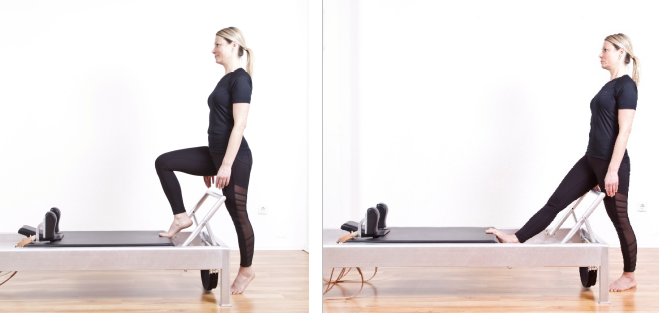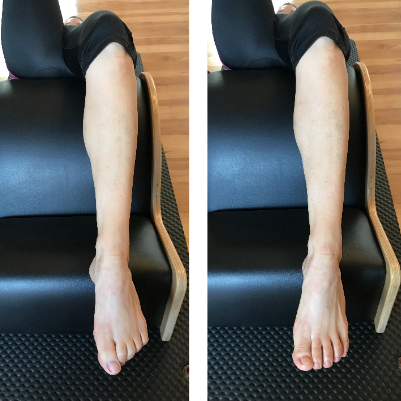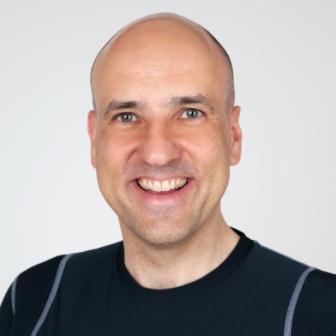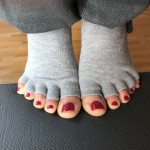September 25, 2019
Footwork is Everywhere
by Reiner Grootenhuis
For most of us Pilates enthusiasts, “Footwork” is a series of exercises we do on the Reformer or in a similar, but not quite the same, way on the Wunda Chair or the Electric Chair – even if some might then call it “Pumping”. Some of us think of supine footwork on the Spine Corrector when we hear “Footwork”. And some Pilates people of the more modern school would have learned supine Cadillac exercises with the Push-Through-Bar which are also called “Footwork”. But there is more to it.
Let me first clarify what I mean when I say “Footwork is everywhere”. In this article, it means first and foremost that Footwork is everywhere in our Pilates system. However, it also means that footwork is everywhere in our lives and that we should try to understand its importance.
“But Reiner, isn’t abdominal work, or shoulder work, etc. everywhere, too?” Yes it is. But we have to choose where to start, and I will tell you why I believe that our feet are an excellent starting point.
As you know, Joseph Pilates was very focused – you can almost say obsessed – with the feet. His first patented device was the Foot Corrector and the German patent name speaks specifically about correcting the feet: “Vorrichtung zur Beseitigung oder Besserung von Bein- und Fußfehlern o. dgl.” (Device for eliminating or correcting leg and foot defects or the like). Believe me, it looks and sounds as archaic in German as it might sound to your ears. Joseph Pilates also reiterated the cure of “flat feet” in the patent of the Reformer. He genuinely wanted for us to stretch our toes and even developed a device, which is often called the ‘Toe Stretcher’, to help us with that.
Did you know that during the time that Lolita San Miguel and Kathy Grant studied with Joseph Pilates, he tried to explain the concept of foot reflexology and how the footwork actually stimulates the whole body to Lolita? She had never heard of the concept of foot reflexology before that, as it was not at all common knowledge in the 1960s. Much later, during her first foot-reflexology treatment, she understood what he had tried to convey to her.
While Footwork and the aforementioned devices help us to concentrate on our feet, what about all other exercises where our feet are touching the Footbar, the loops or the pedal? How crucial is the role of correct Footwork in successfully doing these exercises?
I realized that when I am over-concentrated on a particular part of an exercise, like the Pull Up on the Wunda Chair, I sometimes lose the connection to my feet. And by losing that connection, the exercise collapses like a house of cards. Let’s take another example: going up sideways on the Electric Chair. There are so many elements you need to get right in this exercise – the positioning of the knee over the foot, the pelvis being in the correct position, the expression of the chosen arm position – all very important. However, most of the time, they are not totally crucial or something that we work towards. But the second I lose the connection to my foot on the pedal, I somewhat collapse in the exercise.
My mentor, Kathy Corey, has mastered the art of presenting deceivingly simple exercises which are obviously not simple at all but often require mastery of footwork and balance / counter-balance. When writing this article, I immediately had to think about the standing footwork I learned from her and which I partly share here:

Stand in front of the Reformer with one spring. Place the toes and ball of one foot at the edge of the carriage. Without leaning the upper body forward or backward, come up onto the tiptoes of the standing leg and then back down. Repeat this 3 times. Now raise both heels and push the carriage out again without leaning forward. Lower both heels again. Then raise both heels once more and bring the carriage home. Finally, lower the heels. Repeat 3 times.
Did you feel the footwork radiating through your body? What a wonderful reminder of how vital the connection to our feet is in order to master an exercise successfully.
Now in that exercise, we had the floor and the carriage to assist us; let us move on to the feet not touching anything.
Jenny Colebourne, a Pilates teacher living in Greece, tells a story about working with Jerome Andrews, one of Joseph Pilates’ assistant teachers, after Romana Kryzanowska had left for Peru:
I remember he had shown us a version of the ‘Jackknife’ on the machine.
Note: The “machine” is a foldable Reformer without straps, which Jerome Andrews had obtained from Joseph Pilates.
He had said when going up to lead with the big toe. I climbed on the machine. I don’t know why. Well we all do it don’t we? I had done a ‘Jackknife’ many times and shoulder stands many times. I was a bit tired and I just didn’t. I went up in my own way. There was a silence. Very quietly he said, “You didn’t lead with the big toe.”
(source http://jennycolebourne.com/
Hearing the story for the first time made me realize instantly that there is more to it than just asking the question of whether the feet are in point or flex during a certain exercise. It made me think more about, and more strongly observe, what we particularly do with our feet in each exercise of our wonderful Pilates system. Even when we are not touching any equipment.
Just have a look at the two photos below.

Can you see how the foot supinates in the left picture and how the toes curl down?
Now, in the right picture I just gave a few verbal cues and you can see how the foot and lower leg try to align? For sure it is still not perfect, but what a difference.
In my opinion, this ‘footwork’ also translates in how we use our feet while standing, walking, running and jumping. And by correcting the way we use the feet, our body floats through life more easily. And I guess that is the main purpose of our work.
Or as Carola Trier said:
“You play ball, jump, run, go to the gym, ride your bicycle. You go to dancing class. Why should you exercise? The answer is, to do all these things better.”
Reiner Grootenhuis

Besides obtaining a diploma in psychology and an MBA, Reiner Grootenhuis has studied the healing and martial arts of the Southern Shaolin Monastery Weng Chun.
He completed the training as a Pilates instructor for Pilates mat and equipment at the Pilates educational academy Body Arts & Science International.
He is the founder and operator of the largest Pilates forum worldwide, pilates-contrology-forum on Facebook, which includes 9200 Pilates instructors. He also offers a free of charge hugly successful pilates-contrology-marketplace for selling and buying Pilates equipment on Facebook which has almost 8300 members.
At the beginning of 2012, he opened the pilates-powers studio only 25 km away from Joseph Pilates hometown.
2014 Kathy Corey appointed him a member of the Board of Directors of the Pilates Heritage Congress, which takes place every two years in the hometown of Joseph Pilates.
In 2015, he published the first publicly available German training manual on the Wunda Chair and 2016 an Baby/Arm Chair manual.
In 2017, Reiner completed the Kathy Corey Mentor program, in which he learned the methods and exercises of teachers trained directly by Joseph Pilates such as Kathy Grant, Ron Fletcher, Eve Gentry, Bruce King and Romana Kryzanowska.
2018 Reiner published the first publicly available German Pilates Cadillac manual.
Since November 2017 Reiner has been a Pilates Intel Expert for the online magazine Pilates Intel for which he writes regularly.
Since September 2018 Reiner has been nominated as a member of the Certification Committee of the German Pilates Association.

